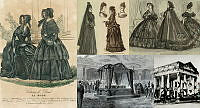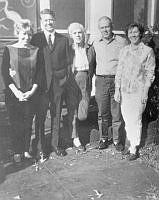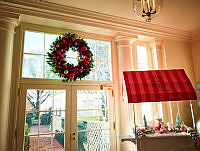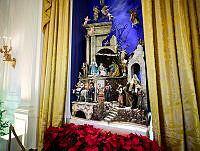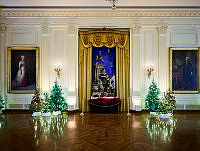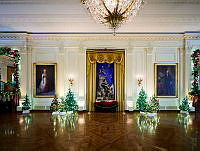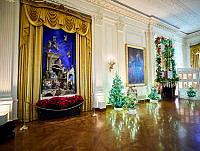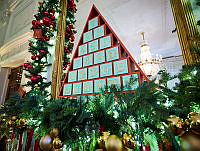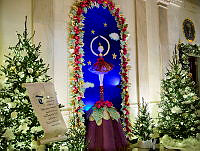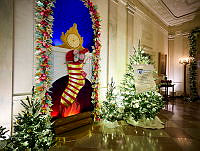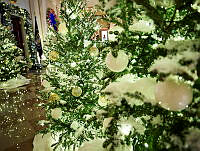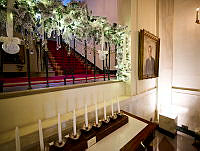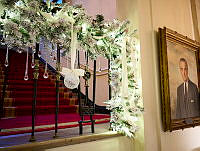Rubenstein Center Scholarship
The Art of John Singer Sargent in the White House

Self-Portrait, by John Singer Sargent.
Wikimedia CommonsAmerican artist John Singer Sargent (1856-1925) is the creator of two major paintings currently on display in the White House Collection. Both are striking, but one of them puzzles visitors perhaps more than any other item in the building.
Although his parents were American, Sargent was born in Florence, Italy, and spent most of his youth abroad. He trained as a painter in France and launched his career there before moving to London. Sargent established himself in Great Britain as a leading portrait painter, although he also painted scenes of the English countryside, and made several visits to the United States during which he prepared the portraits of several notable Americans. Among them was President Theodore Roosevelt, whom Sargent painted in 1903.1
The commission for the painting was arranged in 1902, likely at the behest of architect Charles McKim, who was then renovating the White House under Roosevelt’s direction. Sargent was living in London at the time, but expected to return to the United States to continue work he had undertaken for the Boston Public Library. When Sargent agreed in May 1902 to paint the president’s picture, Roosevelt wrote to him that “it seems to me eminently fitting that an American President should have you paint his picture. I cordially thank you.”2

Theodore Roosevelt, by John Singer Sargent.
White House Collection/White House Historical AssociationSargent arrived in the United States in January 1903 and came to live in the White House the following month. At first, the personalities of the two men made progress difficult. Sargent was especially picky about the location where he would ask the president to pose, and Roosevelt was notoriously prickly and impatient with directives. According to one account the president was leading the artist upstairs when the two got into an argument. Roosevelt accused Sargent of not knowing what he wanted, and the artist retorted that the president did not know how to pose. Furious, Roosevelt turned around, grabbed the newel-post with his right hand and yelled “Don’t I!”—at which Sargent told him to hold his pose right there. Sargent completed his portrait on February 19 after several sessions. The president’s refusal to pose for more than half an hour at a time annoyed the painter, but Roosevelt was delighted with the results, professing to “like his picture enormously.”3
After being privately exhibited in a local gallery, the portrait was hung in the White House Entrance Hall at the beginning of April 1903, as Roosevelt’s official portrait. A critic wrote that “Mr. Sargent has portrayed more than the outer man. . . . He has pictured with the President’s features his energy, his alertness, his aggressiveness and his unyielding disposition, but he has left out the kindliness and geniality which have won for Mr. Roosevelt the regard of his subordinates and the affection of his friends.”4

The Mosquito Net, by John Singer Sargent.
White House Collection/White House Historical AssociationThe other Sargent painting arrived at the White House in November 1964 as a gift from Whitney Warren of San Francisco in memory of late President John F. Kennedy. It is titled “The Mosquito Net,” and was likely painted by Sargent in 1912 at Abriès in the French Alps. Its subject was Polly Barnard, who was the daughter of one of the artist’s friends; and the painting was one of the few that Sargent maintained in his personal collection until his death in 1925.5
In the days before effective mosquito repellent, other forms of protection were necessary. This was true especially in the summertime, and even in the Alpine regions of Europe. The subject, then, reclines on a voluminous bed, having abandoned her reading and looking pensively through the netting that covers the upper half of her body. The painting was first hung in the Second Floor oval room of the White House. At first glance, visitors often mistake it for a painting of a woman on her death bed; but the painting’s light-hearted tone becomes apparent after careful study.











